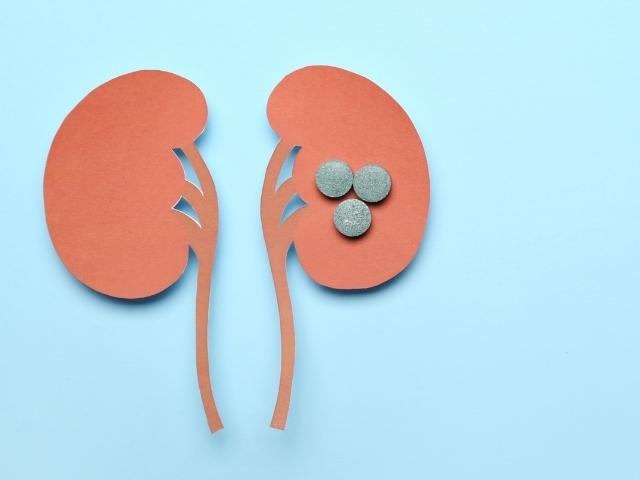- 374-C, Amrapali Circle, Vaishali Nagar, Jaipur
Laparoscopic Urologic Surgery
Laparoscopic Urologic Surgery
Laparoscopic urologic surgery is a minimally invasive procedure used to correct urological issues with less pain for patients. This surgery involves the use of a laparoscope with a built-in camera and long, thin surgical instruments, which are inserted into small incisions in the body. Patients who undergo this procedure experience better pain control, shorter hospital stays, faster recovery periods, and improved outcomes.
Nowadays, robotic technology is widely used in laparoscopic urologic procedures, including radical prostatectomy for prostate cancer, providing surgeons with better visualization and dexterity. This has led to an increase in popularity of robotic surgery at Amar Jain Hospital.


When Is Laparoscopic Urologic Surgery Used?
Amar Jain Hospital offers laparoscopic urologic surgery for a variety of benign and malignant conditions. Common procedures performed laparoscopically include Pyeloplasty, Nephrectomy, Partial Nephrectomy, Radical Prostatectomy, and Radical Cystectomy.
Preparation Prior to Laparoscopic Urologic Surgery
Standardized imaging procedures play a crucial role in laparoscopic urology procedures, as the decision for surgery is often based on preoperative imaging results. However, the size of the affected organ can sometimes hinder laparoscopic surgery, especially if there is restricted space for specimen mobilization due to large renal tumors or pathologically enlarged adjacent organs.
Prior to laparoscopic urology procedures, it is the doctor's responsibility to inform the patient of potential operative risks. While laparoscopic surgery is associated with comparatively less blood loss, the surgeon ensures that packed red blood cells are available before the surgery if needed. It's important for the patient to be aware that certain conditions like fibrosis or adhesions may require conversion to an open surgery.
Urology Surgery Procedure
The position of the patient during laparoscopic urologic surgery depends on the selected surgical procedure. A transperitoneal approach is used for adrenal or renal dissection, with the patient in a modified lateral position for easy access to the abdominal cavity. In retroperitoneoscopic approach, the patient is in a stiff lateral position, and the decision between retroperitoneal or transperitoneal approach is made by the surgeon. Pelvis procedures like prostatectomy require a specialized Trendelenburg position with the leg elevated and head down.
During laparoscopic urologic surgery, a pneumoperitoneum is established to create a working space. Two techniques are used for this: the Verress needle technique and the open approach. In the extraperitoneal approach, a balloon dilation is performed through a small incision at the 12th rib in the mid-axillary line to create working space between the psoas muscle and Gerota's fascia. Port placement is done once the working space is established, with additional ports introduced under the direct vision of the surgeon while avoiding injury to sutures.
Nephrectomy Surgery
To ensure excellent visualization and duplication of open surgery principles, laparoscopic devices are elongated versions of scissors, dissectors, vascular staplers, graspers, and scalpels. A specimen retrieval bag is used for specimen retrieval, which is inserted through a port and unfolded in the surgical space. Once the specimen is entrapped in the bag and extracted, the laparoscope is re-introduced to verify the absence of bleeding. Ports are removed under direct vision to control any unexpected bleeding. Before removing the last trocar, the pneumoperitoneum is deflated, and the small incisions are closed like in an open surgery.
Complications After Urology Surgery
Laparoscopic urologic surgery is a minimally invasive surgical technique used to treat a wide range of benign and malignant urologic conditions. Common laparoscopic procedures include Pyeloplasty, Nephrectomy, Partial Nephrectomy, Radical prostatectomy, and Radical Cystectomy.
Before the surgery, the surgeon relies on preoperative imaging to make decisions about the type of surgery needed. The patient's position during surgery depends on the selected surgical procedure, and a pneumoperitoneum is established prior to laparoscopic procedures.
During laparoscopic surgery, ports are used as a portal for the placement of other instruments, and specimen retrieval is achieved using a specimen retrieval bag. Once the specimen is extracted, the laparoscope is re-introduced to verify the presence of bleeding, and ports are removed under direct vision to control unexpected bleeding.
Postoperative complications are usually less frequent in expert hands. However, patients should take note of any abnormal sensations post-surgery and consult their doctor if pain persists.
What Are the Advantages of Urology Surgery?
The laparoscopic urology surgery procedure offered at Amar Jain Hospital provides several significant advantages. These include reduced bleeding, smaller incisions resulting in less post-surgery scarring and surgery marks, minimal pain, shorter recovery time, and less hospital stay. Additionally, the surgery decreases the exposure of internal organs to external contaminants, thereby reducing the risk of catching infections.
Care After Laparoscopic Urology Surgery
Laparoscopic urologic surgery is renowned for its minimal post-operative pain, making it a preferred choice for patients who are concerned about post-operative care. This surgery eliminates the need for epidural catheters or controlled analgesics and allows for the resumption of oral nutrition the following day. A single shot of antibiotic prophylaxis is given before the surgery and routine lab tests are performed to monitor the patient's condition.
